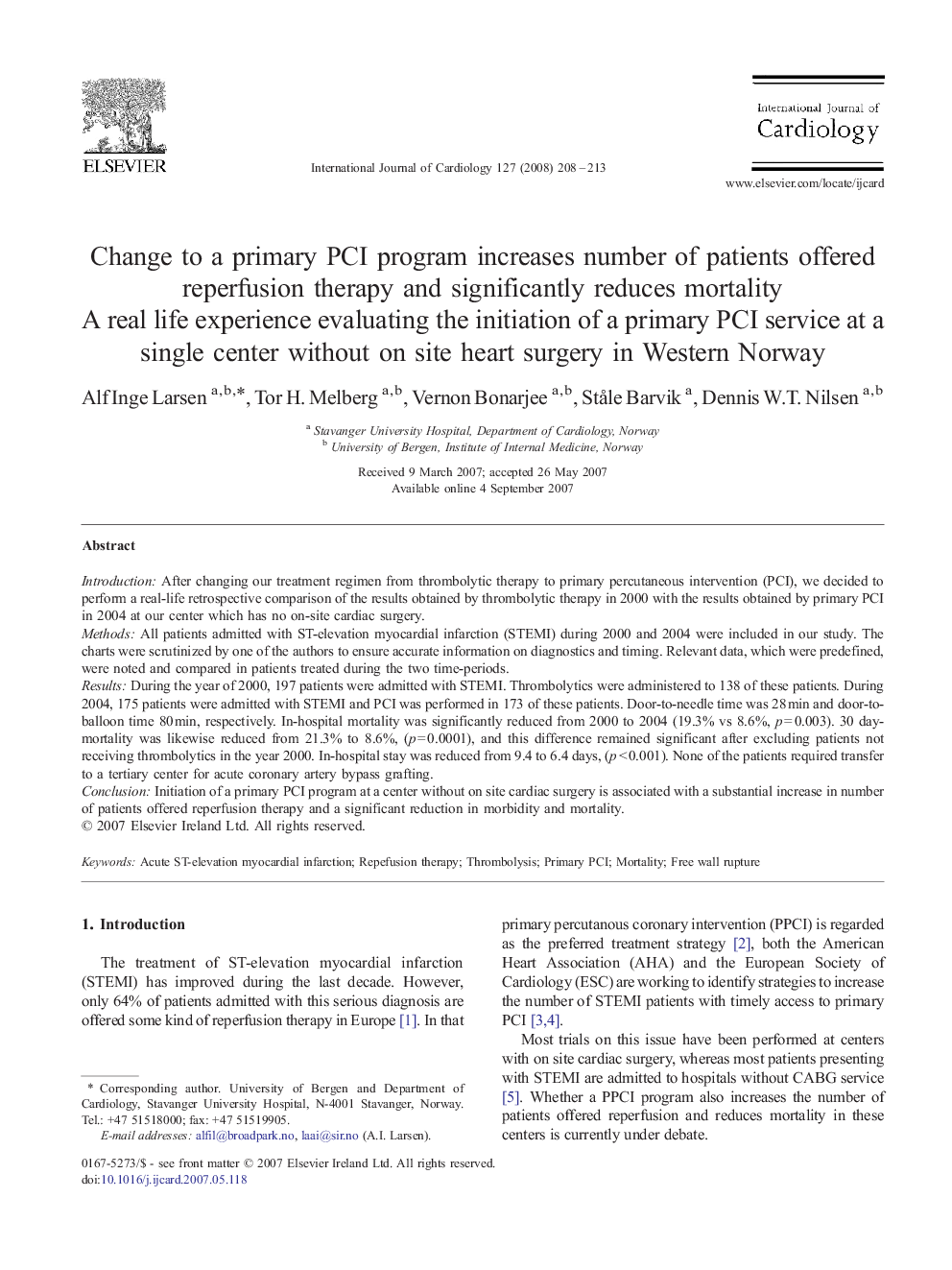| Article ID | Journal | Published Year | Pages | File Type |
|---|---|---|---|---|
| 2934205 | International Journal of Cardiology | 2008 | 6 Pages |
IntroductionAfter changing our treatment regimen from thrombolytic therapy to primary percutaneous intervention (PCI), we decided to perform a real-life retrospective comparison of the results obtained by thrombolytic therapy in 2000 with the results obtained by primary PCI in 2004 at our center which has no on-site cardiac surgery.MethodsAll patients admitted with ST-elevation myocardial infarction (STEMI) during 2000 and 2004 were included in our study. The charts were scrutinized by one of the authors to ensure accurate information on diagnostics and timing. Relevant data, which were predefined, were noted and compared in patients treated during the two time-periods.ResultsDuring the year of 2000, 197 patients were admitted with STEMI. Thrombolytics were administered to 138 of these patients. During 2004, 175 patients were admitted with STEMI and PCI was performed in 173 of these patients. Door-to-needle time was 28 min and door-to-balloon time 80 min, respectively. In-hospital mortality was significantly reduced from 2000 to 2004 (19.3% vs 8.6%, p = 0.003). 30 day-mortality was likewise reduced from 21.3% to 8.6%, (p = 0.0001), and this difference remained significant after excluding patients not receiving thrombolytics in the year 2000. In-hospital stay was reduced from 9.4 to 6.4 days, (p < 0.001). None of the patients required transfer to a tertiary center for acute coronary artery bypass grafting.ConclusionInitiation of a primary PCI program at a center without on site cardiac surgery is associated with a substantial increase in number of patients offered reperfusion therapy and a significant reduction in morbidity and mortality.
